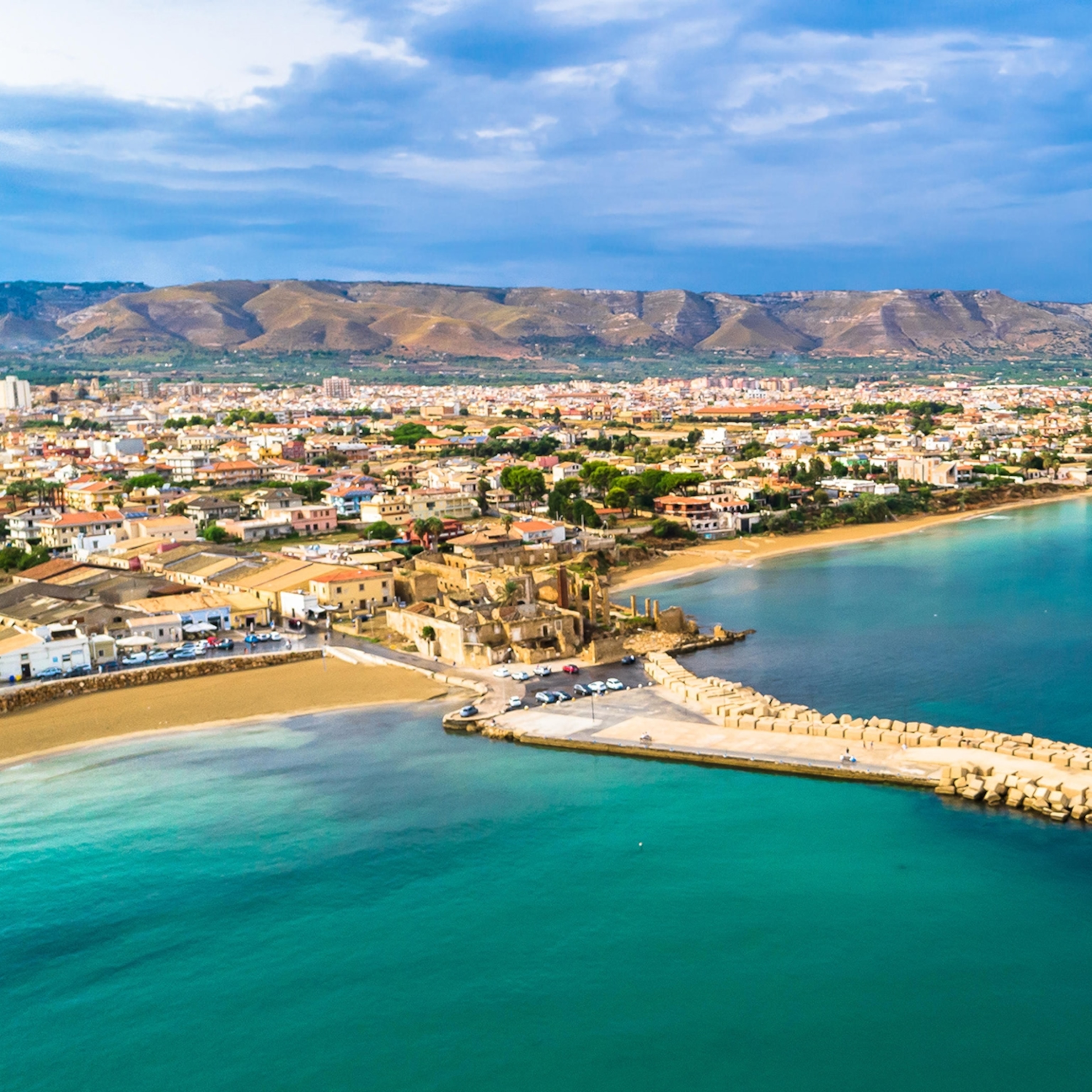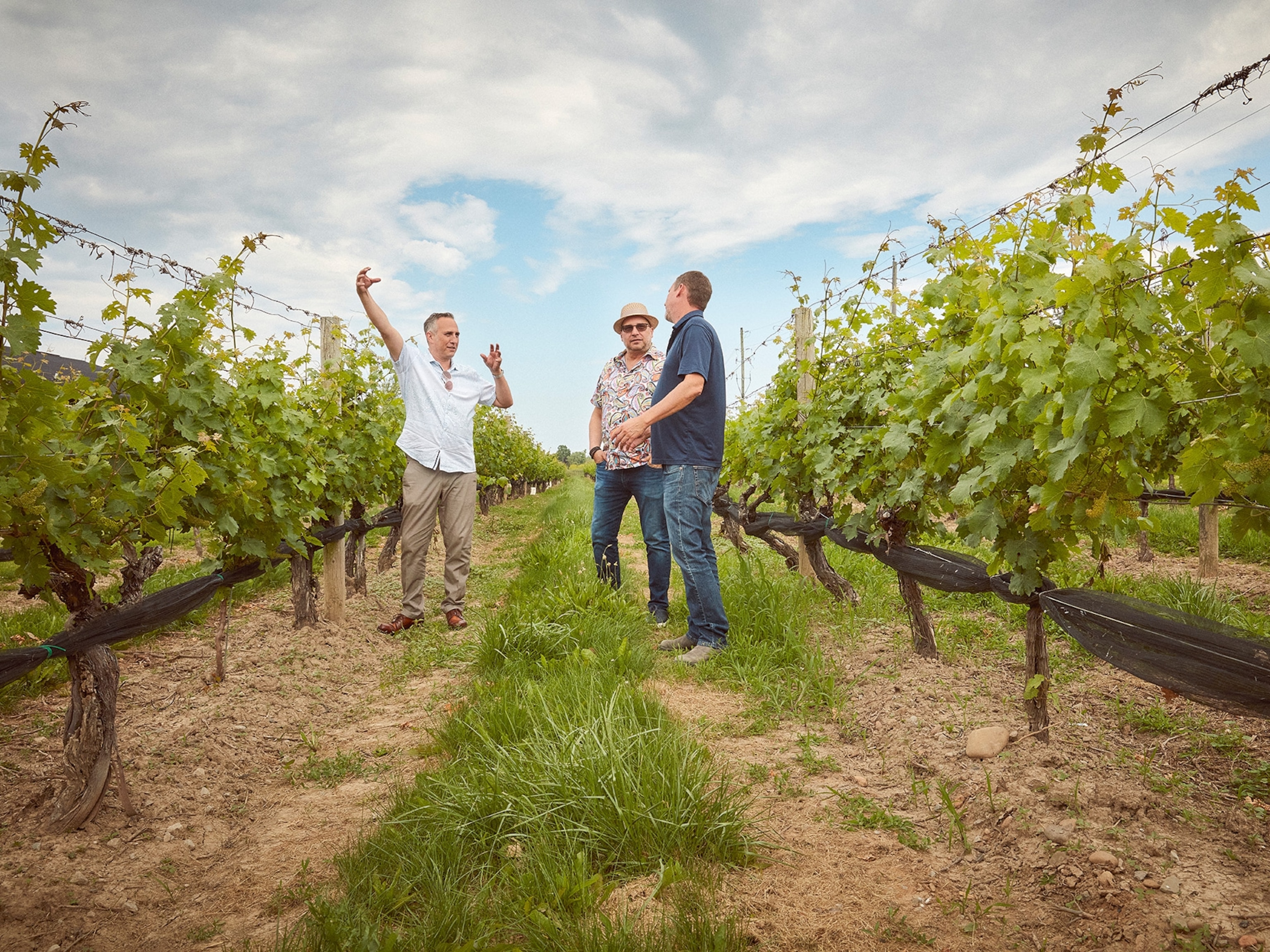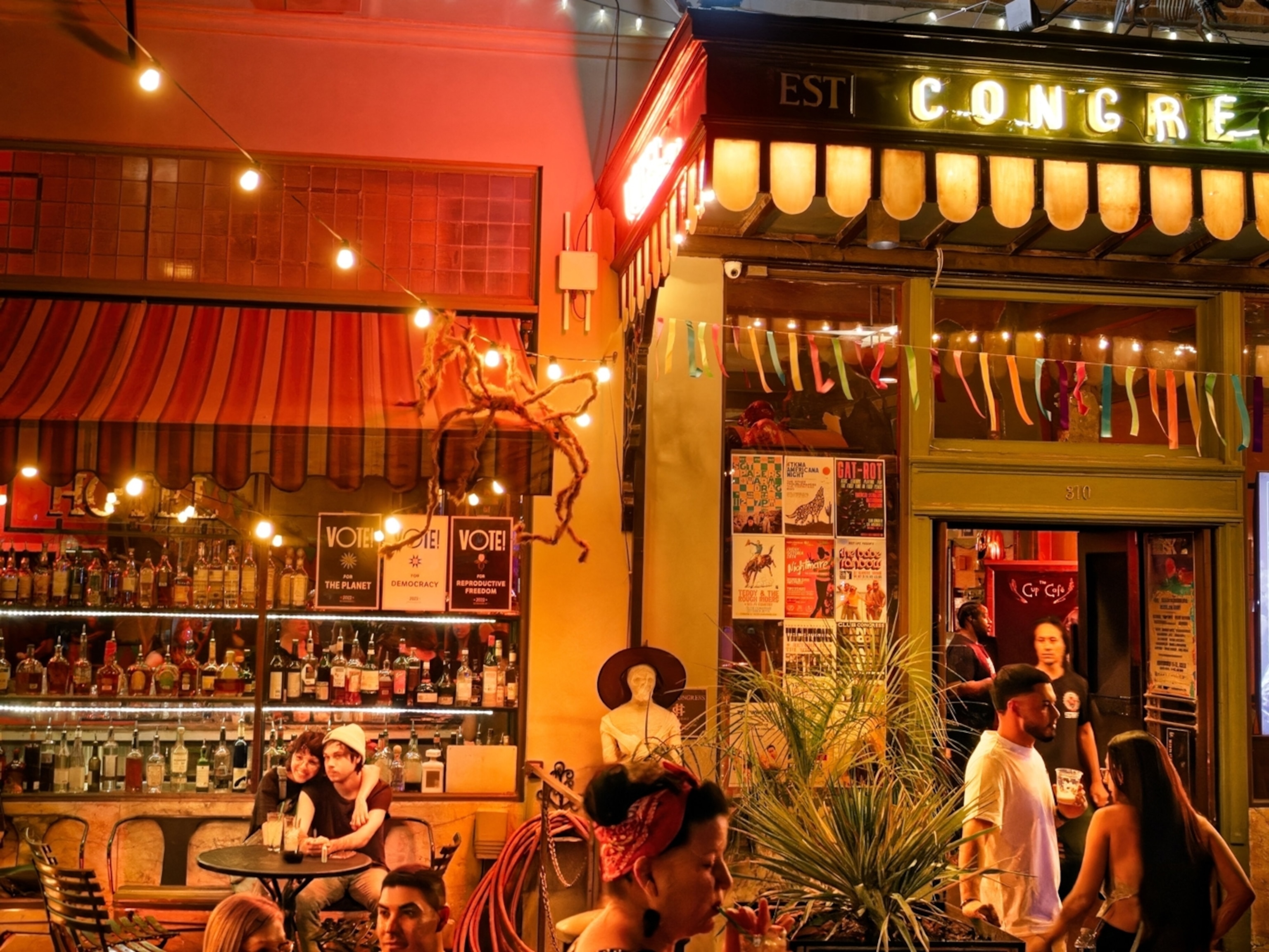
Strawberry Road Trip
How does food get to your door? We followed a truckload of strawberries to find out.
Every morning, cool mist rolls from the Pacific Ocean onto Watsonville, a small town on the central coast of California where food comes reliably out of the ground thanks to a fine-tuned mix of climate and soil and seeds designed for big yields. Watsonville is also an industry hub. The town grows berries—miles and miles of fields of strawberries, blueberries, and raspberries—that find their way all over the world. Any crop can sit in a plane for a few hours to reach China or Dubai. Perhaps the more impressive story is the one about how berries end up in every major supermarket in America perfect, perky, and predictable.
A few months ago, my colleague Spencer Millsap and I decided we wanted to see the distribution system at work. We wanted to trace the massive journey food travels to reach markets thousands of miles away. And there was no better food to follow than the strawberry, one of the planet’s most perishable crops. Every country around the world eats strawberries, but nobody eats more strawberries than Americans. The plan was to literally follow a strawberry truck the entire journey, from the field in Watsonville to a supermarket in Washington, D.C. The goal was to keep pace on a journey that occurs thousands of times a day, never seen but almost always on schedule.
On any given day, around half a million trucks on American roads shuttle something edible, back and forth, weaving through traffic in a finely choreographed dance to deliver fresh food on a deadline. Seasonality once determined what fruit was available when. But since the 1970s, refrigerated trucks and cargo tankers have extended the reach of crops like cherries, apples, and avocados to literally everyone on earth. The availability of fresh oranges in New York City, Detroit, or Minnneapolis is less a sign of the fruit’s durability than a triumph of America’s transportation infrastructure.

For all the hand-wringing about “food miles” and “carbon footprints,” local crops account for only 4 percent of America’s food market. The rest is industrial—grown in a field somewhere and shipped to arrive at peak ripeness. The average food travels more than a thousand miles from field to refrigerator, according to a study from Carnegie Mellon University. Strangely, that doesn't seem surprising. But what constantly surprises me is how that lengthy trip, every food shipped hundreds of miles, is so quiet and with such precision that the end consumer doesn’t have to care about anything other than whether $2.99 is a good price for cherries.
Spencer and I met up with Tim and Karen Rife in a warehouse bigger than a football field and colder than the Arctic. Their truck was being loaded with pallets of strawberries, and they, contractually, had to watch. The Rifes take turns driving the same 18-wheeler owned by their company, Inman Trucking. For long hauls across the country, trucks like theirs that carry perishable foods use two drivers, who alternate driving and sleeping, ten hours on, ten hours off, so that the truck barely needs to stop at all except for fuel and food. In his 17 years on the road, Tim has clocked three million miles. Karen, a former nurse, joined him eight months ago. Every week, they haul their 35-ton truck from their home in North Carolina to California and back, delivering somewhere on the East Coast. Staying on schedule allows them to spend one night each week in a real bed. They’re on the road the other six.
To adopt the same driving schedule, Spencer and I rented a Jeep Grand Cherokee and loaded up with dried fruit and trail mix. The cooler in our backseat was meant to mimic the cab of a semi, where truckers have actual beds and refrigerators, stoves, and flat-screen TVs. Our backseat—which we called "the pod"—was just an air mattress with a pillow and blanket. We agreed that whenever one of us became irritable with road fatigue, all the other would have to say was, “Get in the pod.”

There's an urgency to moving strawberries, and speed is the result of respiration. Strawberries breathe, inhaling and exhaling like any mammal or plant on Earth. A berry’s biggest threats are moisture and heat, hence the cool dry air at all times. As soon as a berry is cut off from its nutrient-delivering vine, it begins to suffocating, which causes its immune system break down, which leaves it vulnerable to mold. But if it stays cold and dry, a strawberry can last about two weeks after it leaves the field. Trucking strawberries from central California to the East Coast of the U.S. means maintaining the “cold chain,” the industry term for the transfer between warehouses and trucks. The colder the berries, the longer the shelf life (without freezing them; that's death). One break in the chain can end a strawberry’s edibility.
Within the first hour, we lost the truck. We got sandwiched between a few other semis, and Tim and Karen plowed ahead. They didn’t bother waiting but they did call 30 minutes later to ask if we’d gotten lost. Tim rattled off a series of highway and exit numbers. He said we would make our first stop in Lake Havasu City, Arizona. Then he ended the call by saying between puffs of a cigarette, “We’ll see if you can keep up.”
Our car got better mileage, but the truck had a bigger fuel tank. An 18-wheeler can carry roughly 270 gallons of diesel, needing to refuel only four times to get across the country (each fill-up = $800). A trucker is lucky to get seven miles (11.2 kilometers) to the gallon—usually it’s more like five or six. A separate fuel tank runs the "reefer" in the back, the refrigerator unit. If the reefer ever turns off, sensors will instantly alert the trucking company's headquarters and the load will be refused by the grocery store at the end of the road.
Exactly 12 hours later, at 3 a.m., we crossed into Arizona and pulled in to a truck stop. Lake Havasu City, Arizona, is best known for London Bridge, which was brought in pieces from England in 1967 and later reassembled to draw tourists. Some woman at the truck stop said we didn't need to see the bridge, especially in the middle of the night. For the best, since 20 minutes later Tim and Karen were drying off from their showers—one free with every fill-up—and ready for another long stretch.
Tim had explained to us the day before that the worst part of racing across the country is undoubtedly the time between 3 and 6 a.m. No matter how many years you’ve been driving, in the early hours of the morning it’s incredibly hard to stay awake. Heading eastward, you’re literally driving toward the dawn, trying not to think that if you just go a little faster, it’ll come sooner. But it comes just the same every day, and before long, the sun will be directly in your eyes and you'll wish it was dark again.
At dawn, we reached the streets of Flagstaff, Arizona, suburban and golden. We passed a burger place called Bun Huggers and a post office. Inside a Starbucks, we met an energetic barista who asked how we were doing.

“We’re OK.”
“What do you mean just OK? You got through Monday and you’re surviving!”
Not now, pal.
After that, it became clear why Arizona and New Mexico are sometimes called the Saudi Arabia of solar energy. Both are large expanses of flat desert with the occasional rocky outcrop but not a single shadow, even in the pod, where direct sunlight covered Spencer’s face while he tried to nap. Every few minutes he’d start to breathe heavily. Then we’d hit a bump or a dead animal, and he’d lift his head and look around.
The cab of a semi is about the size of a small studio apartment. Spencer and I took turns riding shotgun for a few hours, chatting with Tim and Karen about life on the road. Tim, 44, got into truck driving for the freedom and the money. Karen, 40, joined him when she needed a career change. Every year the couple takes a week or two of vacation. Since their job is to keep moving, their preferred vacation is to stay home.
They also explained to us that their’ truck doesn’t always carry strawberries. When they travel east to west, they haul something nonperishable, like pickles or beans. From west to east, it’s fruit. I asked Tim if he ever thought about what he was hauling or let his mind wander about who would end up eating these berries. He said he thinks about "the cargo" is when it’s liquid. Every so often he carries barrels of glue and when you brake, the glue pushes the truck forward then pulls it back like a slingshot. He doesn't like hauling glue.
But usually truckers can’t be picky. The load is the load. As long as it’s not overweight, it could be anything. That night, at a buffet in Amarillo, Texas, I asked Tim what the weirdest thing was he’d ever hauled.
“Probably turkey butts,” he said.
"Turkey...butts?"

“Oh yeah,” he deadpanned while chewing on a piece of chicken cutlet, “Just the butts.”
Our cargo this trip—26 pallets of strawberries—was a breeze, as long as the reefer stayed on. Based on a grocery store price of $4 per container, the truck was carrying about $200,000 worth of strawberries, all slowly suffocating but none too quickly. To safeguard the cargo, the trucking industry is subject to regulations that truckers both appreciate and lament. The Department of Transportation allows each person to drive ten hours a day, which means that a solo driver has to spend more time at truck stops than on the road. Many drivers get paid by the mile, leading to an industry condition known as mileage hunger.
Sometime around hour 44, I called up Jeff Plungis, a transportation reporter familiar with labor laws for truckers. Most truckers usually get paid by the mile, bringing in about $600 to $800 for a cross-country drive. But it's not just money. To see that number in persepctive, one need consider the demands of working six days a week, day and night, sleeping on the side of the road and finding meals in musty truck stops—where the only fresh food is usually sitting in the trucks outside.
“America runs on cheap transportation, which makes the profit margins for these trucking companies very small,” Plungis told me. “It puts a lot of pressure on these truckers just to make a living.” When I told him that we were trying to follow a truck, he laughed and wished us luck. “I think one thing you’ll find is that no one in the system has any incentive to make truckers’ lives any easier.”
At the moment our lives weren’t at their peak, either. Tim could see our fatigue and offered us a five-hour break. When we showed up five hours later, we were actually two hours late. We were running on local time in Oklahoma City—where we were—and Tim and Karen were keeping East Coast time. Truckers run on the time zone of their destination. We apologized in sheepish disbelief. Tim laughed and we got back on the highway.
We didn’t have a chance to mess with Texas or see winds sweeping down plains in Oklahoma. Spencer spent most of Arkansas in the pod while I kept alert with talk radio and riteous music. We paused at a truck stop in West Memphis, Tennessee, where Tim stood inside reading a manual about staying healthy on the road. Every year truckers have to take tests for mental and physical acuity to keep their licenses.
For all the hurry and the quick pit stops and the driving slightly over the speed limit, that's also risk in going too fast. A truck that arrives early has to wait outside a food distribution center for its scheduled window of delivery. A store’s old grapes or bananas need to be sold before new ones arrive, or it messes with the whole system. If you’ve ever gone to a supermarket with a coupon for strawberries and left with a rain check instead, it means someone screwed up in the ordering department or a truck missed its deadline.
By hour 65, Spencer and I began to sing in falsetto. We took another shot of caffeine to head into the home stretch through Virginia and eventually into Maryland. Tim wanted to stop at another truck stop to “burn a little more time,” so we did. Inside, Karen was practically jumping up and down. She said that they’d gotten the papers for their next haul. In less than 48 hours, they’d head back to California carrying, of all things, air filters. Neither of us could tell what she was so excited about, but apparently air filters are slightly lighter than fruit, which means the truck can travel faster and doesn’t have to run a reefer unit.

You’d think that the end of such a journey would be momentous, as if the end was some triumphant crossing of a finish line. In reality, food distribution ends not with a bang but with the high-pitched beeping of a truck reversing into a loading dock in the middle of the night. Nobody is around to welcome its arrival or bring nourishment to the team that just crossed a continent in three days. Instead, all that came was a request over the radio to wait on the street with about 20 other trucks until our number was called.
The next day Spencer and I visited our local Whole Foods in Washington, D.C., to watch the final leg: the trip to the store where someone in an apron would load the berries onto a shelf. A woman who was texting on her phone picked up a clamshell box of strawberries. Someone else grabbed about six, piling them onto a cart full of groceries. I wanted to call Tim to tell him about these berries that people were buying the berries, that our trip had been worth it. But he and Karen were long gone.
For an hour, we looked on as shoppers whittled down the pile. A produce clerk came over to chat and was surprised when we explained we had just followed those guys, 3,200 miles coast to coast. I had wanted him to have a new appreciation of all the produce he touches after knowing how much time and effort it takes to arrive in his store. But he hadn’t changed; only we had. Before we left, I asked him how often the store gets new shipments of berries. How often does this cross-country ballet of trucks play out, so people can have their fresh strawberries any day of the year at almost the exact same price? His answer was the rare combination of words that made me shudder with both fatigue and shock, disbelief and fascination. “Every day," he said, and then turned to do something else.









